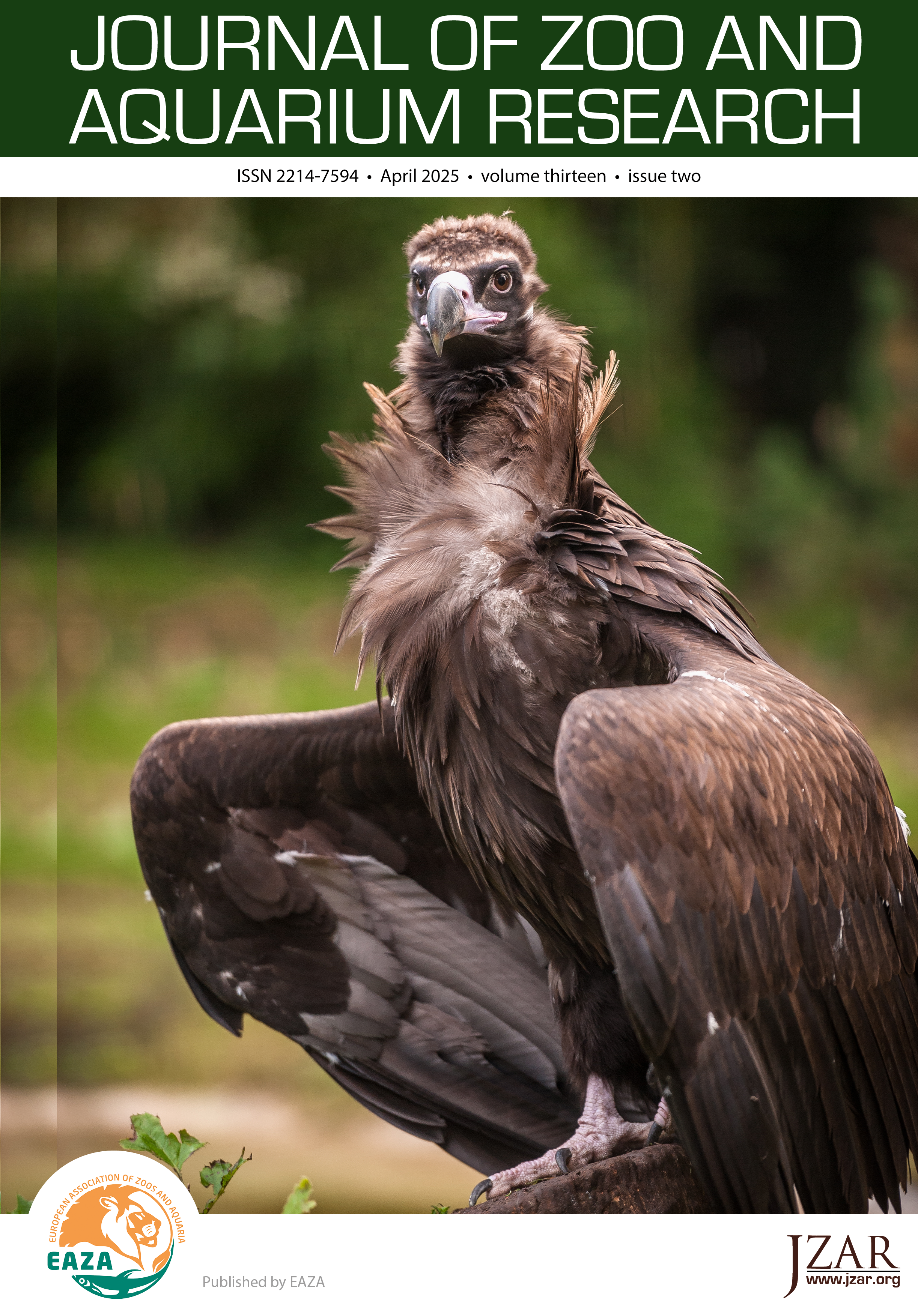Behavioural changes in response to changing group size and sex ratio in a captive bonobo Pan paniscus group
Keywords:
behaviour, bonobo, captive management, group, social, zooAbstract
In modern zoological organisations, the size and sex ratio of great ape groups are determined by management recommendations that aim to replicate the dynamics of wild groups. In this study, the influence of changing group size and sex ratio on the behaviour of a captive group of bonobos Pan paniscus is investigated. It was found that group size and sex ratio significantly influenced the occurrence of genito-genital rubbing while grooming, social play, stereotypy, locomotion and agonistic behaviours were not found to be significantly impacted either by group size or sex ratio. Authors suggest that in this case genito-genital rubbing is sufficient to mitigate social tensions brought about by the comparatively small changes in group composition occurring in this study. These results indicate the importance of both group size and sex ratio on the daily behaviour of captive bonobos and suggest that they should be taken into account when managing the fission-fusion dynamics of captive bonobo groups.
Downloads
Published
How to Cite
Issue
Section
License
JZAR fulfils the DOAJ definition of open access and provides free and open access to the full text of all content without delay under a Creative Commons licence. The copyright holder of JZAR publications grants usage rights to third parties, allowing for immediate free access to the work and permitting any user to read, download, copy, distribute, print, search, or link to the full texts of articles.







